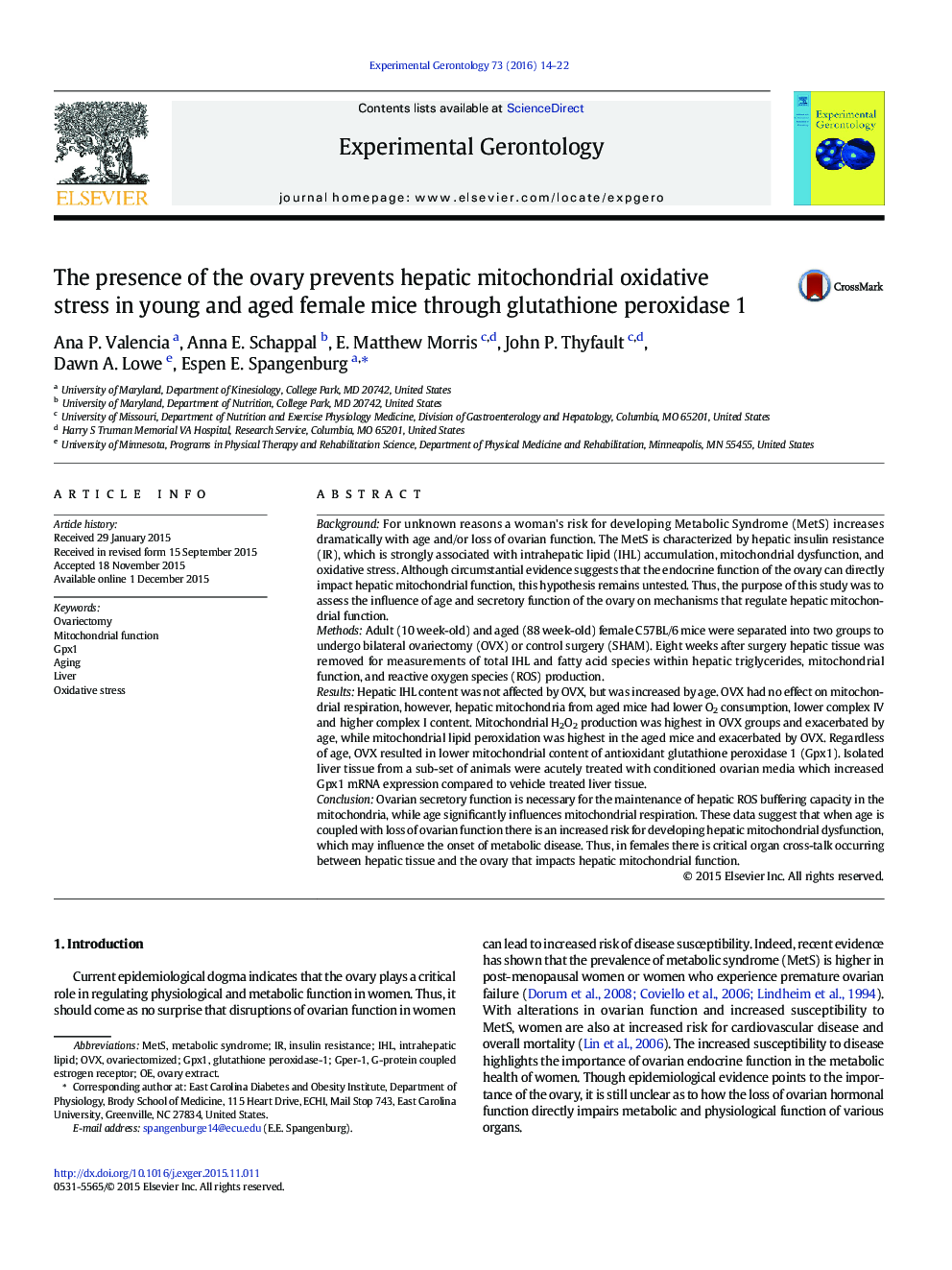| کد مقاله | کد نشریه | سال انتشار | مقاله انگلیسی | نسخه تمام متن |
|---|---|---|---|---|
| 1906158 | 1534868 | 2016 | 9 صفحه PDF | دانلود رایگان |
• Ovary removal results in hepatic oxidative stress which is exacerbated in aged mice.
• Ovary removal exacerbates mitochondrial lipid peroxidation in aged mice.
• Ovary removal results in decreased Gpx1 protein content in hepatic mitochondria.
• Ovary secretions directly enhance Gpx1 expression in liver through Gper-1.
• Hepatic mitochondrial oxygen consumption is lower in aged mice compared to young mice.
• Ovary removal results in more monounsaturated fatty acids incorporated into stored liver triacylglycerol.
BackgroundFor unknown reasons a woman's risk for developing Metabolic Syndrome (MetS) increases dramatically with age and/or loss of ovarian function. The MetS is characterized by hepatic insulin resistance (IR), which is strongly associated with intrahepatic lipid (IHL) accumulation, mitochondrial dysfunction, and oxidative stress. Although circumstantial evidence suggests that the endocrine function of the ovary can directly impact hepatic mitochondrial function, this hypothesis remains untested. Thus, the purpose of this study was to assess the influence of age and secretory function of the ovary on mechanisms that regulate hepatic mitochondrial function.MethodsAdult (10 week-old) and aged (88 week-old) female C57BL/6 mice were separated into two groups to undergo bilateral ovariectomy (OVX) or control surgery (SHAM). Eight weeks after surgery hepatic tissue was removed for measurements of total IHL and fatty acid species within hepatic triglycerides, mitochondrial function, and reactive oxygen species (ROS) production.ResultsHepatic IHL content was not affected by OVX, but was increased by age. OVX had no effect on mitochondrial respiration, however, hepatic mitochondria from aged mice had lower O2 consumption, lower complex IV and higher complex I content. Mitochondrial H2O2 production was highest in OVX groups and exacerbated by age, while mitochondrial lipid peroxidation was highest in the aged mice and exacerbated by OVX. Regardless of age, OVX resulted in lower mitochondrial content of antioxidant glutathione peroxidase 1 (Gpx1). Isolated liver tissue from a sub-set of animals were acutely treated with conditioned ovarian media which increased Gpx1 mRNA expression compared to vehicle treated liver tissue.ConclusionOvarian secretory function is necessary for the maintenance of hepatic ROS buffering capacity in the mitochondria, while age significantly influences mitochondrial respiration. These data suggest that when age is coupled with loss of ovarian function there is an increased risk for developing hepatic mitochondrial dysfunction, which may influence the onset of metabolic disease. Thus, in females there is critical organ cross-talk occurring between hepatic tissue and the ovary that impacts hepatic mitochondrial function.
Journal: Experimental Gerontology - Volume 73, January 2016, Pages 14–22
